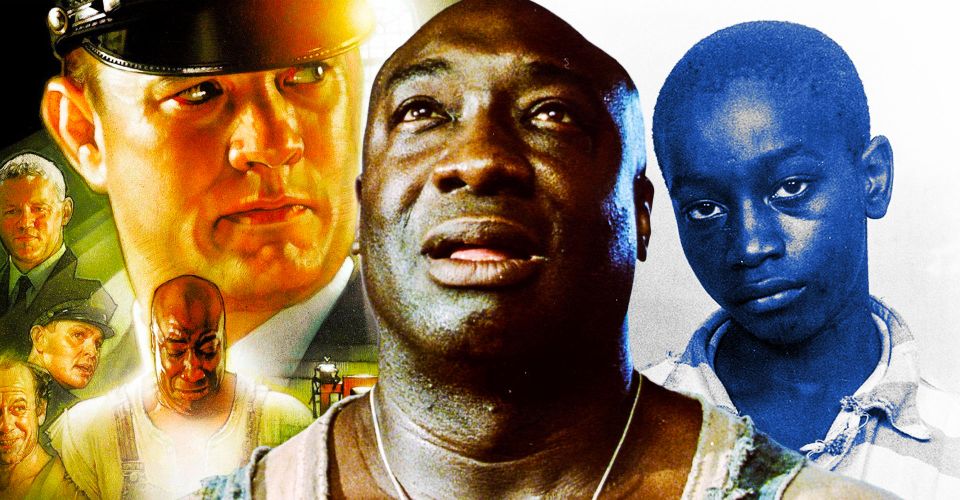Is The Green Mile Based On A True Story? The Answer Is Complicated

The Green Mile follows the imprisonment and execution of Michael Clarke Duncan’s John Coffey, but when it comes to whether or not the film is based on a true story, the answer is complicated. The fantasy-infused drama introduces a group of prison guards – including Paul Edgecomb (Tom Hanks) – who work on death row in a Louisiana penitentiary, nicknamed “The Green Mile.” As an elderly man, Edgecomb tells his story looking back on the movie’s events. In his younger days Paul was tough, as his job required, but he was also ethical. He didn’t believe in pushing the psyches of men who were already stressed about their impending demises any more than necessary.
The dreary routine of the prison was shaken up when an inmate named John Coffey arrived. Though innocent, he was a black man who had been convicted of raping and murdering two young, white girls. Sadly, since The Green Mile takes place in the southern U.S. during the Great Depression, it’s immediately clear the kindhearted, gentle giant didn’t stand a chance at winning back his freedom or saving his life. The film’s fantasy aspect kicks into gear when both guards and viewers learn that Coffey had the miraculous ability to heal other people from ailments and injuries. Unfortunately, neither his innocence nor his supernatural talent was enough to save him from an emotionally devastating death via the electric chair.
Since this kind of tragic, unfair derailing and taking of a life has been documented in great quantities over the years, the question naturally arises as to whether the film is based on a true story or not. Technically, the answer is “no.” The movie is an adaptation of the 1996 Stephen King novel The Green Mile. That said, there are certainly strong parallels to the real-life George Stinney case. The aforementioned youth was a 14-year-old boy who was also convicted of killing, and possibly sexually assaulting, two young girls in 1944. There are differences; Stinney was from South Carolina instead of Louisiana, and the film’s plot is set a decade before the events of his case. But, unfortunately, there are additional similarities between him and John Coffey. Despite being a minor, Stinney was also executed by the electric chair the same year of his arrest and trial.

And, like The Green Mile’s John Coffey was portrayed in director Frank Darabont’s 1999 King adaptation, Stinney seems to have been innocent of his alleged crimes. In 2014, a South Carolina circuit court judge vacated his past conviction – meaning his previous guilty verdict was made void. It was determined Stinney’s Sixth Amendment rights, which pertain to criminal prosecution, had been violated. Not only that, but the judge also believed it likely the boy’s confession had been coerced, which should have made it inadmissible in court. Like John Coffey, George Stinney never had a chance; his fate was decided by an all-white jury and his so-called counsel provided him with barely any defense.
Beautiful and horrifyingly tragic, The Green Mile is on par with films like the Matthew McConaughey-starring legal drama A Time To Kill and 1988’s Mississippi Burning. Though ultimately fictional and based in fantasy, it’s another movie that chronicles a small snapshot of the widely documented failings of U.S. law enforcement and legal systems in racialized cases during this time period.
About The Author


















